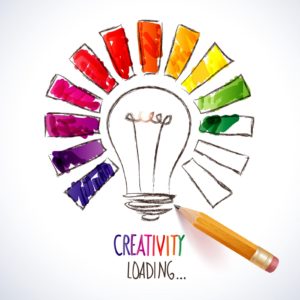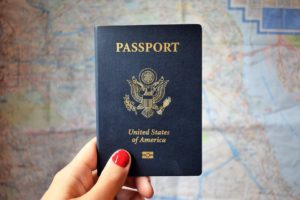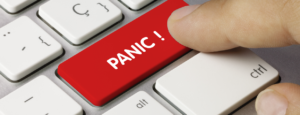“Curiosity about life in all of its aspects, I think, is still the secret of great creative people.” – Leo Burnett
As a young girl, my mind was always active. I had an innate curiosity for anything and everything, loving something completely new every day. I grew up in a creative environment surrounded by poets, artists and musicians. I always found myself at peace when I was able to pluck ideas from my brain and deliver them in a unique way. Utilizing creativity was not a hobby, but rather, a way of being.
As I emerge into adulthood, my perspective on creativity has changed. Initially, creativity was something I looked at as a gift, not a skillset. I looked at the likes of Bob Dylan, Steve Jobs and Marie Curie and assumed they were simply born innovative. However, it has become more and more obvious to me that the gift of a creative mind can only be used to its utmost potential if it is skillfully welded, groomed and utilizes the process of “creative flow.”
Possessing a creative mindset simply won’t cut it. Ideas must have the means to stream and circulate healthily, hence, the birth of the term “creative flow.” The sweet sap from a tree exists naturally but can only be in our possession if we tap into the spruce itself. The same goes for a creative flow. It must be released and guided in order to be properly utilized.
Flow – the mental state of being completely present and fully immersed in a task – is a crucial contributor to creativity. All outside distractions must retreat from our consciousness while our mind remains fully open. Mihaly Csikszentmihalyi, psychologist and author of the book Flow, determined that flow is not only essential to a productive employee, but imperative for a happy one as well. He found that people in this state find genuine satisfaction because they’re completely immersed in an activity that allows their creative soul to blossom.

Here are 5 tips that can help jumpstart your creative flow:
1. Be open
Many of the most successful, creative people are open to new experiences. Steve Jobs once said that “the bigger your bag of experiences, the more varied the connections you can make between things-like say, technology and liberal arts.” The more you put yourself out there and push the confinements of your comfort zones to their limits, the more eclectic your experience “bag” will be. You never know, you may find new passions and hobbies by doing this as well!
2. Capitalize on what brings you relaxation and bliss
This may be through meditation, listening to music, watching a TED Talk or taking up boxing classes. Finding healthy ways to keep your mind satisfied and grounded will lead to the outpour of free-flowing, creative thoughts. More specifically, exercise has been known to increase mental clarity and creativity. According to neuroscientist, Wendy Suzuki, there has been some evidence which supports the idea that exercise could help make us more creative due to the fact that aerobic workouts encourage the growth of new brain cells in the hippocampus. All-in-all, participating in the things that make you happy, whether you can do them while you work or in your free time outside of work, will curate the perfect environment for you to tap into the creative burrows of your mind.
3. Have a concrete goal
While letting your mind run wild with a steady stream of thoughts and ideas is the desired outcome of a creative flow, it is important to keep a target achievement in mind, before you start your flow. It’s vital to reflect on what you’re hoping to achieve in the end. The path towards this goal may not be so straightforward initially, but it will help to have an end goal in mind before you reach that objective and add more creativity to it.
4. Concentrate on a single task
In relation to point two above, complete concentration on the present moment is crucial. Any concern for failing and looking bad, or succeeding and looking good, will break this concentration. Great musicians or athletes often become totally lost in the heart of a performance or game. Their focus is completely set on hitting that three-pointer or nailing the piano solo they’ve rehearsed for months on end. Your focus needs to remain honed-in on the moment, void of thinking far ahead – there will be sufficient time to reflect and edit.
5. Embrace the opportunity for failure
In the words of Joseph Chilton Pearce, “to live a creative life, we must lose our fear of being wrong.” If the anxiety of worrying about what others will think of you plagues your mind, there will be a constant barrier keeping you from maximum creativity. Be confident in yourself and push internal and external negativities out of view. Embrace any and all unique thoughts, jot them down and see where they can take you. You’ll never know what ideas will turn into successes if you don’t take a leap!
While you may read the above and think creative flow is only useful for those in an artistic profession, we could all benefit by viewing the communications industry as an art form as well. It takes true skill and creativity to sculpt the correct “voice” with the right language in order to deliver compelling ideas that will actually resonate with people, or to illustrate a brand with words that will ignite a specific feeling. In order to conquer our clients’ goals, we need to start living like sponges; absorbing everything in and around our industry. If we begin to tap into the creative burrows of our minds and think in color, we’ll begin to see in color, therefore bringing more satisfaction and success not only to our clients, but ourselves as well.
The post The Art of Creative Flow: What you Need to Know appeared first on Lou Hammond Group.
from Lou Hammond Group https://louhammond.com/2018/12/12/the-art-of-creative-flow-what-you-need-to-know/
via https://louhammond.com






